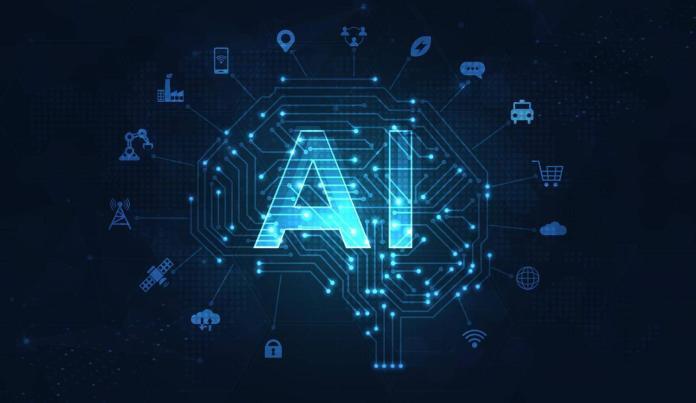Artificial intelligence (AI), often known as machine intelligence, is the imitation of human intelligence in devices created to imitate and carry out tasks that traditionally require cognitive ability from humans. It entails creating algorithms and systems for computing that can comprehend, reason, learn, and make judgments based on facts. Artificial intelligence (AI) spans a wide range of technologies, including robots, computer vision, machine learning, and the analysis of natural language.
Huge data sets are analyzed by AI scientists, which then spot patterns and use the knowledge gained to anticipate or decide. AI can be taught to carry out tasks including autonomous driving, speech recognition, translation of languages, image recognition, and generating speech.
Why is AI Needed in Today’s Time?
First off, as a result of the expansion of digital data, AI systems are required to effectively analyze and interpret the massive volumes of data being produced. AI professionals are improving their AI careers by implying these tools in real-life. The volume, diversity, and rapidity of data are often too much for traditional data processing techniques to handle. Organizations can extract useful insights, identify patterns, and arrive at data-driven decisions thanks to AI certification programs like machine learning and data mining, which improve productivity and provide them a competitive edge.
Second, AI has the capacity to streamline and simplify a variety of tasks, boosting productivity and liberating staff members for more challenging and innovative projects. Automation that is powered by AI can complete routine, repetitive jobs quickly and accurately, improving both precision and effectiveness.
6 Most Useful Artificial Intelligence Applications
1. GPS (Global Positioning System) and Navigation Application-
To effectively estimate traffic conditions, AI algorithms examine historical patterns, real-time traffic data, and other pertinent information. This data enables navigation systems to recommend the quickest and most efficient routes based on the quantity of traffic already present. To create intelligent route planning, AI algorithms can consider a variety of variables, including user preferences, past information on traffic congestion, and road conditions. These algorithms choose the best routes based on a variety of factors, including customer preferences, trip duration, and fuel efficiency.
2. Natural Language Processing (NLP)-
It is an area of artificial intelligence that focuses on how machines and the language of humans interact. NLP software enables machines to comprehend, decipher, and produce human language. By using voice instructions, users can communicate with the navigational device hands-free while driving. The overall user experience and safety are improved by the ability of AI algorithms to perceive and comprehend user commands, deliver spoken directions, and respond to inquiries. Tools for sentiment evaluation, chatbots, and voice recognition systems are a few examples.
3. Autonomous Cars-
AI is essential to the advancement of autonomous cars because it gives them the ability to comprehend their environment, make judgments, and navigate on their own. Autonomous vehicles use AI methods, such as computer vision and deep learning, to read sensor data, recognize objects, and make quick judgments for safe and effective driving.
4. Voice Assistants-
AI is used by virtual assistants like Apple’s Siri, Google Assistant, and Amazon Alexa to recognize and process human requests and questions. They offer voice-based conversations, can play music, deliver weather updates, make reminders, and even operate smart home appliances.
5. Chat GPT-
Chat GPT uses the GPT (Generative Pre-trained Transformer) model from OpenAI. It is a cutting-edge language model that enables users to have AI model communication in normal language. Chat GPT is appropriate for a variety of conversational applications since it can comprehend and produce text responses that sound human. It can be applied to a variety of functions, including virtual assistants, chatbots for customer service, translation of languages, content creation, and more.
6. Healthcare Diagnostics-
AI tools are being used more and more in the healthcare industry to support diagnoses. Medical imaging data from X-rays and MRIs can be analyzed using machine learning techniques to look for abnormalities and help with the identification of diseases. Additionally, AI can examine patient data to spot anomalies and estimate outcomes of diseases, improving individualized treatment regimens. Machine learning techniques are used by AI-based systems for identifying fraudulent activity to scan massive amounts of data and detect suspicious changes or abnormalities.
Threats of Using AI Applications
- AI systems frequently need access to large amounts of data, particularly sensitive and private data.
- Unauthorized entry and privacy violations might result from insufficient data protection mechanisms.
- To preserve user privacy and stop data leaks or misuse, companies must have strong security procedures, data anonymization techniques, and adherence to laws governing data protection.
Conclusion
In order to develop enhanced and competent systems that can adapt, learn, and communicate with humans in ever-more sophisticated ways, the field of artificial intelligence (AI) is constantly evolving. Companies may create breakthroughs, promote creativity, and make substantial progress in domains that were previously difficult to navigate by utilizing AI technologies.
You may also want to read,








